I've heard more than once that when traveling to India Delhi must escape as soon as possible, leave on the first plane, train or rickshaw to any less chaotic, noisy, polluted and depressing place. They are nonsense because it is true that the capital of India is anarchically confusing (and confused anarchic), it has places that really worth. One of them, who inexplicably escapes as inexcusable celebrity, is the Mughal mausoleum on which dreamed the Taj Mahal that would top the absolute perfection. The jewel in marble has a worthy predecessor Humayun's Tomb, lies the second monarch of the Mughal Empire. And in the form of premonition, forward a style that found the delicacy in Agra decades later.
|
|
|
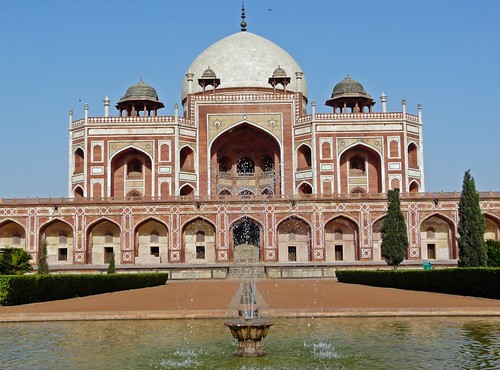
It is strange that Humayun's Tomb has not received too many lights or attention. But it is also true that once allowed me to enter alone for their arched doorways and sit at the monument to stay stunned watching the dream of sandstone and marble.
It came from some terrible days of gastroenteritis or whatever it was that ate my guts and stomach. Something had taken the city of Benares , probably a lassi in poor condition, he had left me starting out. Going only the biggest fear was get sick, which would also travel to India in no less frequent. And I found so bad that after a few hours wandering the Delhi train station decided not to get on the shuttle that was to take me to Corbett Tiger Reserve. I did not dare to leave the forest in such a state and I searched for a little hotel in the city to recover. That caused my plans changed by force, I had to postpone my dream of trying to see tigers and therefore he could devote more time to Delhi once I felt better.

The trip to India took many years dreaming him. I struggled to take the plunge and launch into the adventure. So I was able to document myself and inspiring when could this trip, preferably alone. And when I heard about Humayun's Tomb I did not hesitate a second to include it in my path Delhi should not be as bad as they say -. I thought when I took notes of other travelers forums and travel blogs, who served me help in the foundation this new adventure.
FACE TO FACE WITH Humayun's Tomb
The day I saw that I had controlled the spree had given my body ran away an afternoon. On board the rickshaw driven by one of those crazy people who advance when they should not but they know perfectly emerge unscathed from the chaotic traffic of the city of Delhi, I went to the mausoleum erected to house the bodies of Humayun and his family.
The first surprise for me was to see that there were no tourists around, so I paid my entry (price: 250 rupees, about 3'50 €) and hurried to access the monument before it reached a crowded bus of Japanese who could magic subtracting the visit (which did not happen all afternoon).
When I stood face to face Humayun's Tomb I was speechless. My mind for the silhouette and the white glare paced Taj Mahal had seen and mourn a week earlier. It is inevitable that this happens because of parallels understand the emotions and the building in front of my eyes was the best of the preludes of the wonder of the world that is located in Agra. But it was different, the first step ... and it was wonderful glimpse here so extraordinary origin.
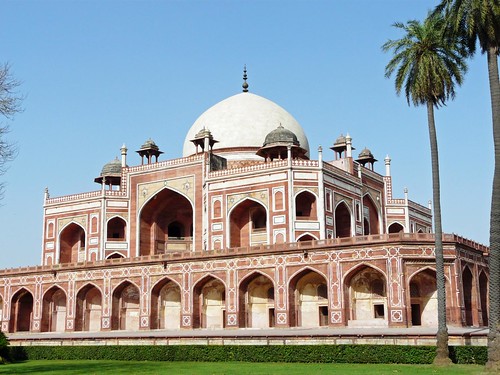
Humayun was the son of Babur, the first Mughal Emperor, Timurid blood from Central Asia. Himself descended from Tamerlane and therefore Genghis Khan Warrior Legend of steppe spread their seed dynastic many centuries after his death. Babur, born in the Fergana Valley in present-day Uzbekistan, had survived the extinction of the race, so he fled, recover and settle in Kabul, where he started attacking the Sultan of Delhi and made in 1527 with the power in North India.
His son Humayun met with resistance from the Rajas and defeated, suffered his own exile. He ended up in Persia, protected by the Shah, as his father did, he gathered a mighty army and returned to India to regain his throne and beat her traitorous brother in Afghan and Pakistani territory. It was 1555, 15 years had passed since his flight from Delhi and was erected triumphant, thus maintaining the continuity of an empire that would stretch over a long time in the country.
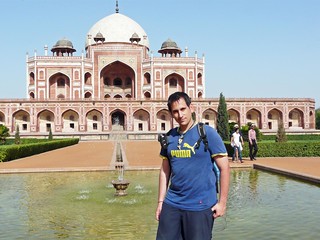
What did a thousand battles, so did the desire to read Humayun. A year later returned to take his place as Emperor perished in the most unusual way. He went to pull himself up on a ladder to find one of the books in his library and fell to the ground, with such bad luck that hit died instantly. Years later his grieving wife Hamida Begum, who was Persian, personally took charge of building a mausoleum to his beloved. Unlike the Taj Mahal, the initiative was a widow, and not vice versa.
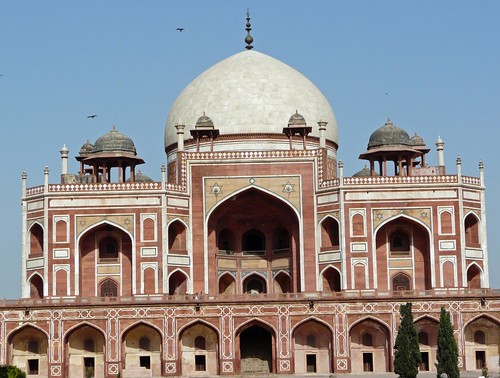
Exact date of construction is unknown but it is estimated that it was built about 75 or 80 years before the Taj Mahal. This is the first example of garden tomb in India, which thereafter would not be strange to find, as the Mughals loved this kind of pantheons. The influences are clearly Persian, Indian and Arab, taking us back to the ancestor Tamerlane and his Timurid mausoleum in Samarkand (Gur-e Amir) , reminiscent in some lines to what is considered a step closer to perfection.
Humayun's Tomb we find an octagonal structure in which the red sandstone has an affair with the black and white marble. Above them stands a whitish dome, which is what ultimately gives a breath of height to the tomb where lies the Mughal Emperor. Symmetry is the great ally of a construction destined to survive in time to make immortal his lying, her family and herself.

I looked again and again, took several detours, I went to see an interior which, though somewhat neglected, claims to be exalted in detail. And I wondered how Humayun's Tomb could be a great forgotten and pass so unnoticed. It is within walking distance of tuk tuk, so to speak, and it is strange to think that very often is passed long.
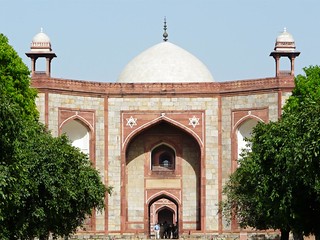
Anything further is a complex with other tombs and mosques, frozen buildings themselves, which blend under the heat of Delhi and humidity of grass that lines the floor where you step.
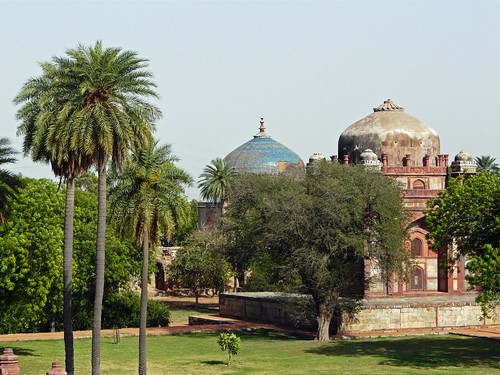
There are places like Barber's Tomb, which is not known who is buried, or Isa Khan, where stands a minaret and rest a confidant of Emperor Humayun. In Nili Chhatri more spoiled than others, there is another character of the Emperor's court Akkbar son Humayun and Hamida Begum.
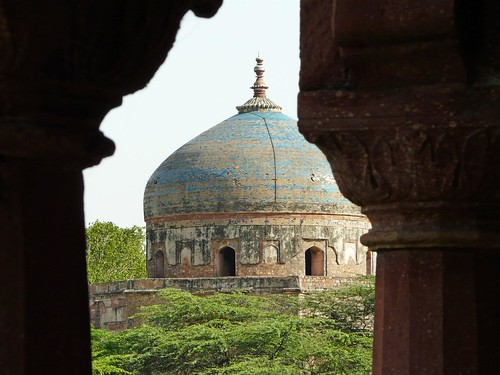
The visit to the burial site can be extended what you want because the reasons for doing so are more than enough. There I tried to capture energy back to the mechanics of a trip to India that had gone wrong in the last corner but could still finish in the best way.
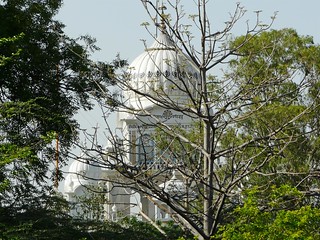
India ... loves or hates. Is visiting Delhi ... background or flee from it. There is no middle ground. In my first foray to China, my heart started for the first choices. And I will do my best to return as soon as possible, but I have the lives of a cat to try to see everything.
Humayun's Tomb consolidated my love affair with India ...
No comments:
Post a Comment